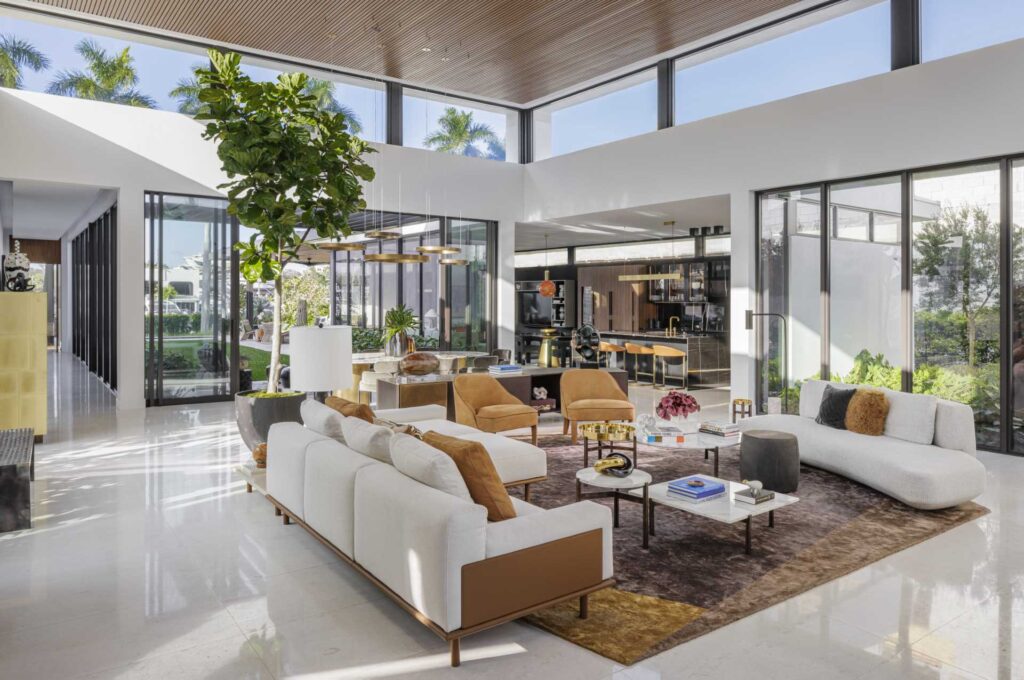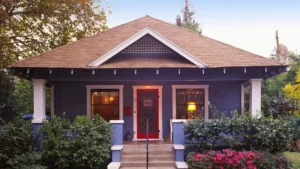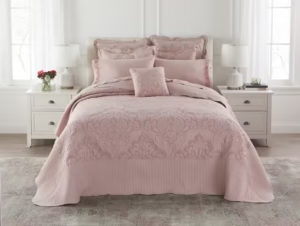It’s a quiet Saturday morning, and as you sip your coffee, soft rays of sunlight stream in through a set of high, horizontal windows just beneath the roofline of your living room. The warm natural light fills the space, accentuating the clean lines of the furniture and casting dynamic shadows that change as the day goes on. Clerestory windows are an architectural feature that dates back to ancient times but has found new life in modern design. Whether trying to create a sense of openness in a compact urban home or bringing the outdoors inside in a rural retreat, clerestory windows provide an elegant solution. Their ability to flood a space with natural light without sacrificing privacy makes them one of contemporary homes’ most sought-after architectural features.
Modern clerestory windows blend functional and aesthetic benefits seamlessly, providing ventilation and light while enhancing the home’s overall design. Their rise in popularity can be attributed to both their practicality and the growing demand for eco-friendly and energy-efficient architectural solutions. In this article, we’ll explore the evolution of clerestory windows, their role in modern design, their environmental benefits, and how they can be incorporated into various architectural styles. We’ll support our insights with statistics and real-world examples, offering a comprehensive guide to this timeless yet innovative design feature.
The History and Evolution of Clerestory Windows
Clerestory windows have a long and storied history, dating back to ancient Egyptian and Roman architecture. In ancient Egyptian temples, clerestory windows brought natural light into large, cavernous spaces that would have otherwise been dimly lit. These high windows were often located between different levels of a structure, allowing sunlight to filter into inner rooms while maintaining the grandeur and solidity of the temple walls.
Clerestory windows were used extensively in Gothic cathedrals of the Middle Ages to illuminate vast interiors with colored, filtered light. Placed above eye level and often filled with intricate stained glass, these windows created a sense of divine light pouring into sacred spaces, enhancing the spiritual atmosphere of the cathedral.
Fast forward to the 20th century, and architects like Frank Lloyd Wright reinterpreted clerestory windows for modern residential architecture. Wright, in particular, saw clerestory windows as a way to merge the indoors with the outdoors, using them to create homes that felt open, airy, and integrated with their natural surroundings. His famous “Usonian” homes often featured long horizontal clerestory windows that invited light while maintaining privacy.
Today, clerestory windows are:
- A hallmark of modernist architecture.
- Offering a stylish solution to the desire for more natural light.
- Greater energy efficiency.
- A seamless connection to the outdoors.
What Exactly Are Clerestory Windows?
In the simplest terms, clerestory windows are windows set high on a wall, often near the roofline, above eye level. These windows are typically long and narrow, stretching horizontally across the upper section of a wall. The primary purpose of clerestory windows is to let in natural light without sacrificing wall space or privacy. Since they are positioned high on the wall, they illuminate a room without needing floor-to-ceiling windows, which can sometimes compromise privacy or make it challenging to place furniture.
In modern homes, clerestory windows are often used in living rooms, kitchens, and bathrooms, where homeowners want to maximize natural light without the risk of neighbors peering in. They also work well in open-plan spaces, as the high windows allow light to pour in from above, creating a bright and airy atmosphere.
The Benefits of Clerestory Windows in Modern Architecture
- Natural Light and Energy Efficiency
The most apparent benefit of clerestory windows is their ability to bring in ample natural light. By placing windows high on the wall, architects can flood a space with sunlight for most of the day, reducing the need for artificial lighting. This is especially beneficial in homes in urban areas or on smaller lots where space is limited, and privacy concerns prevent the use of large, lower-level windows.
According to the U.S. Department of Energy, natural daylighting strategies like clerestory windows can reduce energy consumption by up to 40% in homes and buildings by reducing the need for artificial lighting. Allowing more sunlight into your home reduces electricity bills and creates a healthier living environment. Exposure to natural light has been proven to improve mood, increase productivity, and regulate sleep patterns. A 2020 study published in the Journal of Clinical Sleep Medicine found that people exposed to natural light during the day sleep better at night and report higher overall well-being.
Clerestory windows can also improve energy efficiency by allowing for passive solar heating. During the winter months, sunlight streaming through these windows can help warm your home naturally, reducing the need for heating. Conversely, during the summer, clerestory windows positioned on the north side of the house or shaded by roof overhangs can provide light without the heat, reducing cooling costs. According to Energy.gov, proper placement of clerestory windows can lead to energy savings of 10-20% annually in climates that experience both hot summers and cold winters.
- Privacy Without Compromise
Another significant advantage of clerestory windows is their ability to maintain privacy while offering abundant natural light. Unlike traditional windows at eye level, clerestory windows are positioned high on the wall, out of direct sightlines from the outside. This makes them ideal for urban homes or houses near neighbors, where privacy might concern them.
Clerestory windows benefit bathrooms, particularly as they allow in natural light without exposing the interior to prying eyes. Similarly, in bedrooms, clerestory windows can replace or supplement traditional windows, offering a more secluded, tranquil environment while still providing the benefits of daylight.
- Aesthetic Appeal and Architectural Versatility
Clerestory windows are a favorite among architects and designers because they can dramatically transform a space. They make rooms feel taller, more open, and more connected to the outside world. The play of light and shadows created by clerestory windows can bring an artistic quality to interior spaces, with sunlight shifting across the walls and floors throughout the day.
In terms of versatility, clerestory windows can be incorporated into a wide variety of architectural styles, from sleek, minimalist homes to more rustic, nature-inspired designs. In modernist homes, they are often used to enhance the clean lines and open spaces characteristic of this style. In traditional homes, clerestory windows can be combined with other types, such as picture windows or sliding glass doors, to create a balanced aesthetic that marries old and new.
- Ventilation and Airflow
While clerestory windows are most often associated with lighting, they can also improve ventilation and airflow in a home. Operable clerestory windows can be used with lower windows to create a “stack effect,” cool air entering through lower windows and hot air escaping through the higher windows, naturally cooling the home. This is particularly effective in homes located in warm climates, where proper airflow can help reduce the need for air conditioning.
According to the International Energy Agency, incorporating natural ventilation strategies like clerestory windows can reduce cooling energy consumption by up to 60%, particularly in well-insulated homes designed for passive cooling.
The Statistics: Clerestory Windows by the Numbers
Real-world data back the popularity of clerestory windows in modern home design. According to a report from Houzz, searches for “clerestory windows” on their platform increased by 22% between 2021 and 2023, reflecting a growing interest in this architectural feature. Similarly, a survey conducted by the National Association of Home Builders (NAHB) found that over 30% of new homebuyers in 2022 cited “natural light and energy efficiency” as their top priority, with many opting for modern window solutions like clerestory windows to achieve these goals.
In addition, the American Institute of Architects reported that in 2023, nearly 40% of architectural firms specializing in residential design used clerestory windows in at least one major project. This demonstrates that these windows are not only a design trend but a feature with lasting appeal.
How to Incorporate Clerestory Windows into Your Home
If you’re considering adding clerestory windows to your home, there are several factors to keep in mind. First, think about the orientation of your home. South-facing clerestory windows will bring in the most light throughout the day while north-facing windows provide more diffuse, indirect light. East- and west-facing clerestory windows can create dramatic effects with morning and evening light, but they may also increase heat gain in warmer months.
Next, consider the style and size of the windows. Long, horizontal windows are typical of clerestory design, but the exact dimensions depend on the room’s size and function. If you want operable windows for ventilation, ensure they are easy to reach and use.
Finally, consider how clerestory windows will fit into your overall design. Whether you’re going for a minimalist, modernist look, or a more traditional aesthetic, clerestory windows can be adapted to suit a range of styles.
Conclusion: Light, Beauty, and Function
Clerestory windows are more than just an architectural feature—they’re a way to enhance your home’s atmosphere, boost energy efficiency, and create a deeper connection between your indoor and outdoor spaces. By carefully positioning clerestory windows in your home, you can enjoy the benefits of natural light, increased privacy, better ventilation, and an aesthetically pleasing design element that will stand the test of time.






